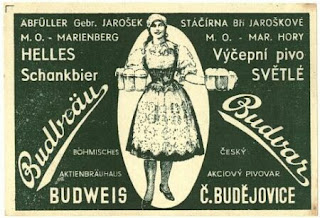Last week, I tweeted the following as the final piece in a thread about how we refer to Czech pale lagers:
This train of thought, combined with something I read in Der Böhmische Bierbrauer about the fact 10° beers were by far the most commonly produced in 1890s Bohemia, got me wondering what exactly is a 10° beer, other than having a starting gravity of 10° Plato?
According to Czech beer law, there are 4 types of beer:
- Stolní pivo or 'table beer', up to 6° Plato OG
- Výčepní pivo or 'tap beer' between 7° to 10°
- Ležák or 'lager' 11° and 12°
- Speciální pivo or 'special beer' 13° and higher
There is nothing in the law about what colour a particular type of beer needs to be, how many IBUs are expected, and all that other stuff you get with style guidelines. I was reminded of this while I was digging around the old interwebs looking for other information about particular historical breweries when I came across a site about Czech breweries before the Communist takeover in 1948, and what a trove of information that turned out to be.
All the label images that follow are from
Pivety, and there is a shit ton more there if you are interested in early 20th century Czechoslovak beer advertising materials.
For example, once upon time, Budvar brewed a pair of 10° výčepní beers, one pale and one dark:
As you can see, the labels are in both German and Czech with exactly the same information on both. It is interesting that the dark lager version, the red one for those with no German or Czech, uses the Czech word "černé", which means "black" as opposed to "tmavé", which is more properly the translation of "dunkles". While I was not surprised to find a dark lager lurking in Budvar's history, I was marginally shocked when I saw this label:

The label is for Budvar's "Granát Export Beer". The "granát" bit is pretty easy to suss out. We are talking "polotmavý", or "half-dark", usually a reddish lager that in terms of colour sits between pale and dark. Such beers often use the moniker "granát" in reference to the garnet gemstones that Bohemia is famous for. I had not seen the term "exportné pivo" though before, and through digging in this label archive, I am pretty confident that we are looking at a 12° Plato polotmavý ležák to use modern parlance. At some point though, Budvar's Granát was a 14° lager, whether it got stronger or weaker, I don't know.

Perhaps the most startling label I have come across so far, was for the Bürgerliches Bräuhaus Komotau, which I referenced in my last post as being at one point in its history registered as a "braucommune". This label shows that at some point the notion of a beer sitting between pale and black on the colour spectrum was known to both the German and Czech speaking communities of Bohemia.
"Halbdunkel" is simply "polotmavý" in German, it was not a term I had seen or heard in relation to German beer before. Seeing it there on the label made me wonder if I could find references to "halbdunkel" in Austrian and German archival sources, but more about that some other time.
This all though does point to the truth that beer is a product of culture, and to understand a people's beer means understanding it in relation to their lived culture. As such, making a 14° pale lager and calling it a světlý ležák when it is more properly a světlý speciál just shows, in my opinion, a lazy disrespect to Bohemian brewing culture and history. Defining "tmavé" as beginning at 11° Plato, when the reality of history shows there have been výčepní beers that are dark is likewise presenting a slanted view of history.
I have argued elsewhere that tradition is an important part of being a craft brewery, but when reaching for someone else's tradition, brewers should seek firstly to be faithful and produce a beer, and label it, something that a person from that tradition would recognise.
Many years ago, a Czech friend's father was given a bottle of Lagunitas Pils, allegedly brewed in the Czech tradition, and spat it out in disgust. Having taken a large mouthful from a bottle of Port City Downright Pilsner, his response was "tohle je České pivo", "this is Czech beer".








No comments:
Post a Comment